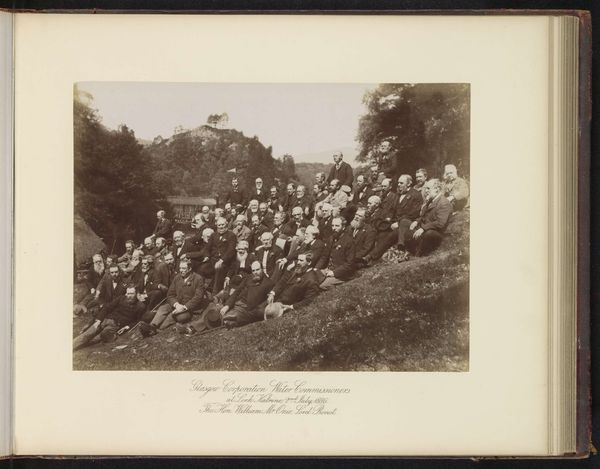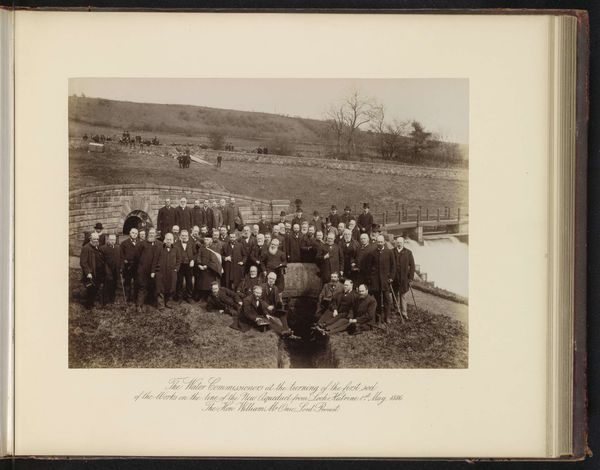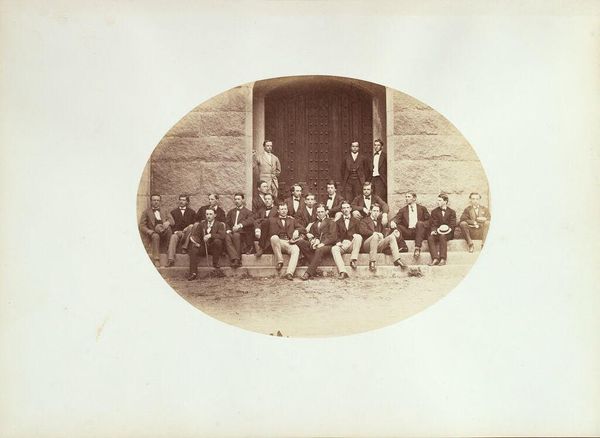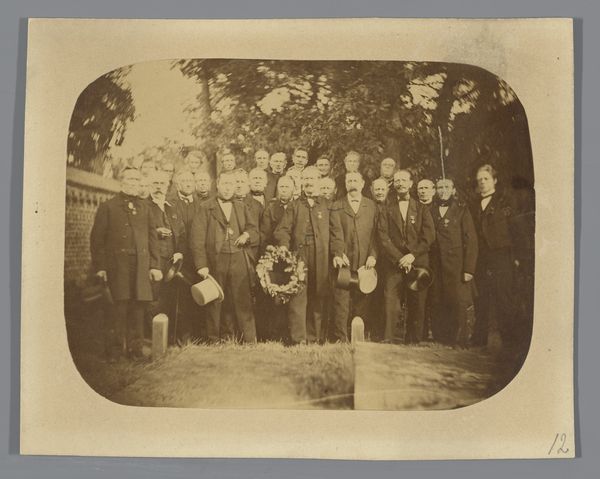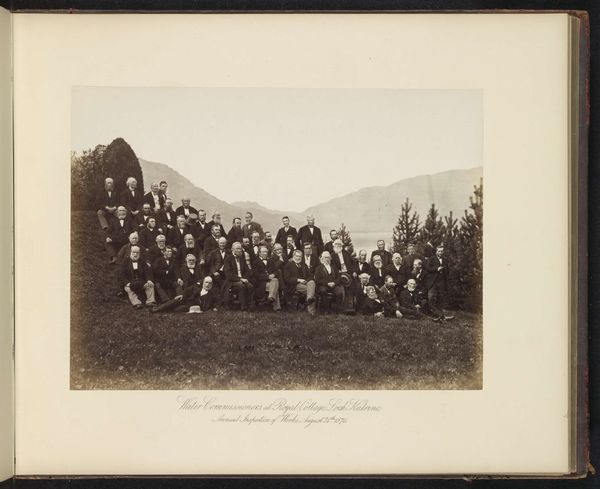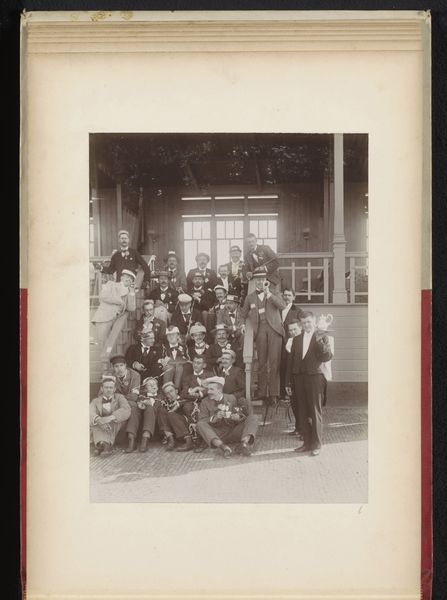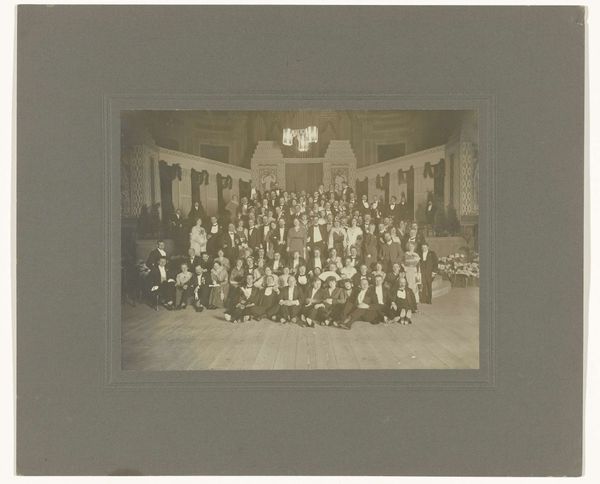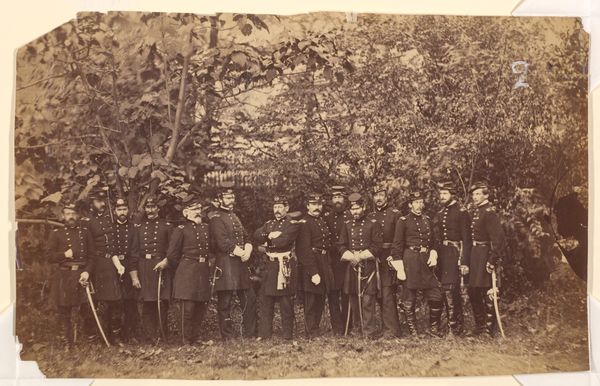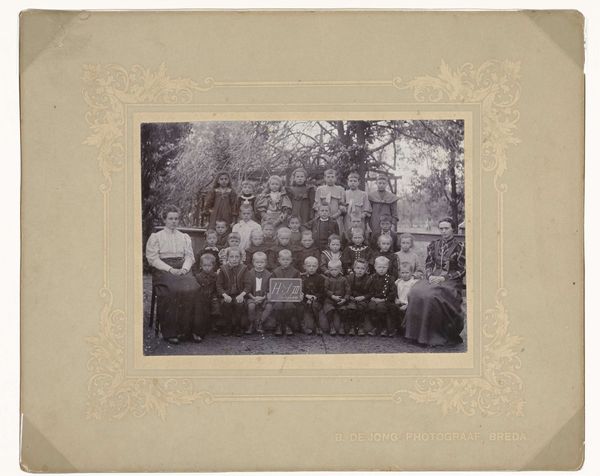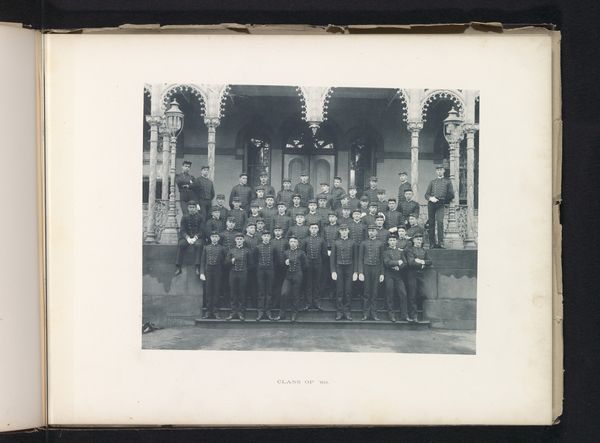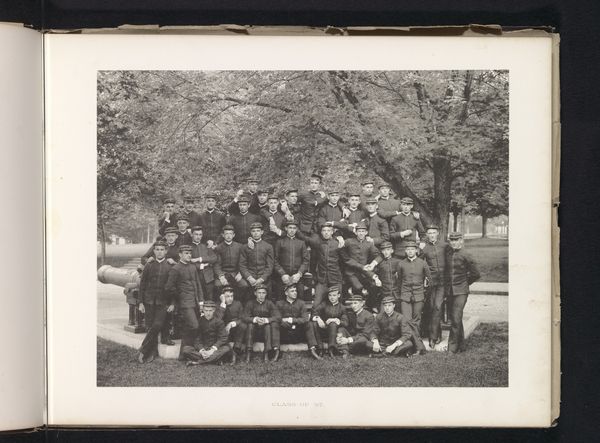
Glasgow Corporation Water Commissioners at Gorbals Works 5th Sept. 1883. The Hon. John Ure, Lord Provost Possibly 1883 - 1889
0:00
0:00
photography, gelatin-silver-print
#
portrait
#
pictorialism
#
photography
#
group-portraits
#
gelatin-silver-print
Dimensions: height 206 mm, width 278 mm
Copyright: Rijks Museum: Open Domain
Editor: Here we have "Glasgow Corporation Water Commissioners at Gorbals Works 5th Sept. 1883. The Hon. John Ure, Lord Provost," a gelatin-silver print photograph taken around that time by T. & R. Annan & Sons. It's a large group portrait, and I'm struck by how posed and formal it feels, but also a bit unsettling in its uniformity. What jumps out at you about it? Curator: This image is deeply rooted in the socio-political landscape of late 19th-century Glasgow. Think about the context: The Corporation Water Commissioners were crucial figures, responsible for public health and sanitation at a time of rapid industrial growth and urbanization. The photograph isn't just a record; it's a performance of power, isn't it? Consider the very act of gathering these men, the Lord Provost among them, for a formal portrait at the Gorbals Works. Editor: A performance of power, that's interesting. So, you're saying the photo itself is making a statement? Curator: Absolutely. How do you think the location plays a role in conveying this power dynamic? What does it say about their relationship with the environment and the people they serve? Editor: Well, the setting isn’t particularly glamorous, more functional. I guess it reinforces the idea that they’re serious, practical men focused on the city’s infrastructure rather than aesthetics. It looks less about individual achievement and more about a unified civic body. Curator: Precisely. The image projects an aura of civic duty and collective responsibility, valuable in a period of substantial social change. The commissioners are predominantly male, highlighting the gendered nature of governance during that time. Notice, too, how these photographs, though intended for public consumption, also found their place in institutional archives, shaping historical memory. Editor: That's a really insightful take. It goes way beyond just a picture of important people, becoming a statement about social order and governance. I hadn’t considered that. Curator: Indeed. Art provides a rich record of the past, reflecting not only its aesthetic values but its social and political ones too. It is about looking closer at who is represented, what power they yield, and how the setting can enhance such themes. Editor: I’ll definitely keep that in mind. Thanks for shedding light on that!
Comments
No comments
Be the first to comment and join the conversation on the ultimate creative platform.
